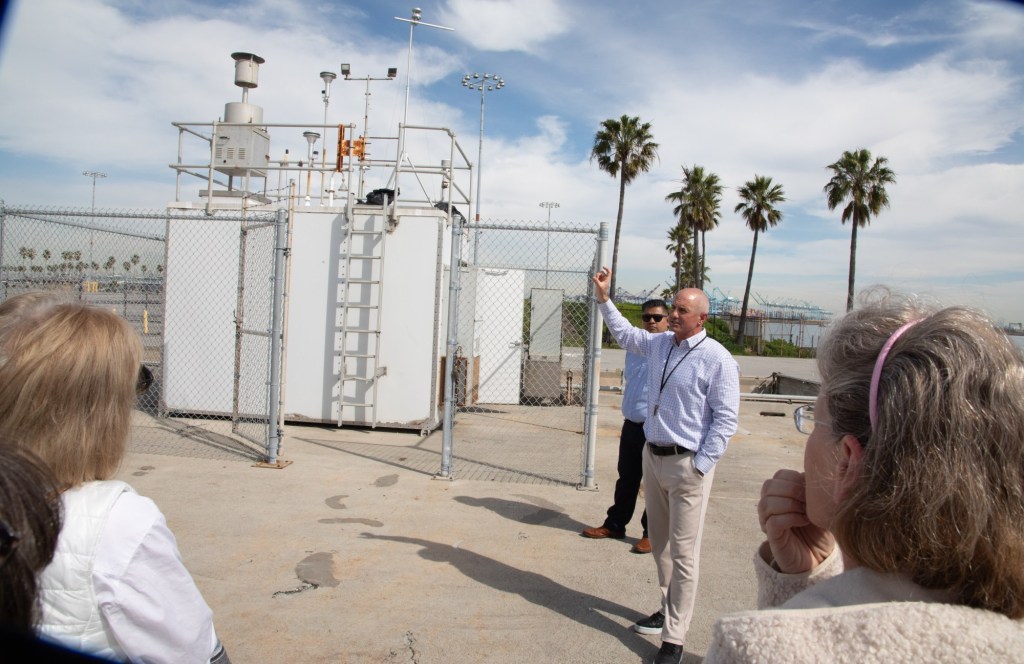An estimated 30 people, mostly local residents, turned out Friday, Feb. 23, to get a first-hand look at how the Port of Los Angeles’ new air monitors work.
The monitors play a crucial role as the port pushes forward to meet emission reduction deadlines and address what has been some of the region’s major pollution sources.
The monitor at Berth 46 in the Outer Harbor, in the vicinity of AltaSea and Warehouse One, is one of four operating in San Pedro, Wilmington and Terminal Island. The Port of Long Beach also has two monitors on its side of the San Pedro Bay. The program is part of the voluntary Clean Port Action Plan the two ports signed onto in 2005.
The sophisticated equipment replaced older instruments and has been fully operational since October.
While they measure both overall air particulates from the region’s traffic and other pollution sources, it also can separate out the pollution coming from the port itself through ships, terminal equipment and trucks.
The system includes backups and is not the only equipment measuring pollution specifically tied to the port.
year, the port publishes air quality updates for the public where progress can be measured. In September, for example, POLA reported that emissions from ships at anchorage fell 75% in 2022 compared to 2021. Greenhouse gasses were down 22% compared to 2021, and a 4% decrease since 2005.
The Port of Los Angeles is working to reduce emissions and greenhouse gasses by 40% below 1990 levels by 2030, and 80% below 1990 levels by 2050.
On hand Friday to lead the tours were Joel Torcolini, air quality program manager with Leidos, and Teresa Pisano and Amber Coluso, both on the port’s air quality team.
In 2008, according to Lisa Wunder, acting director of the Port of Los Angeles Environmental Management Division, real-time air quality monitoring was added to the overall system in place.
Updating and replacing equipment with these new and more sophisticated monitors, she said, took…
Read the full article here







